#cnidarian
Text

Sandalled anemone (Actinothoe sphyrodeta)
By: Hervé Chaumeton
From: Éditions Rencontre Cards
1978
22 notes
·
View notes
Text

The war between Anthopleura sola. Two Starburst sea anemones fighting for territory with their acrorhagi.
464 notes
·
View notes
Text

Lion's Mane Jellyfish (Cyanea capillata)
Family: Cyaneid Jellyfish Family (Cyaneidae)
IUCN Conservation Status: Unassessed
Named for its frilly "mane" made up of over 1,200 long, stinging tentacles, the Lion's Mane Jellyfish is among the largest known jellyfish species; while this viral image showing a diver next to a Lion's Mane Jellyfish has been edited to make the jellyfish appear far larger than it actually is, members of this species still dwarf most of their relatives, with a bell ("main body") diameter of over 2.4 meters (7.89 feet) and a tentacle length of as much as 30 meters (98.4 feet), making it one the longest animals on earth. Typically found near the surface in the Arctic, northern Atlantic and northern Pacific Ocean regions, Lion's Mane Jellyfishes, like all jellyfishes, lack brains, eyes, hearts or respiratory organs (instead exchanging gasses directly between the water around them and their extremely thin tissues,) and rely heavily on waves and ocean tides to travel, but are able to slowly propel themselves in a given direction by expanding the 8 bag-like lobes of their bodies to take in water and then forcing it out again to push themselves along (although they can also to some extent detect and react to their orientation and surroundings owing to a series of frilly sensory structures located around their body's rim, know as rhopalia.) Like most jellyfishes the long, trailing tentacles of a Lion's Mane Jellyfish are lined with touch-sensitive, harpoon-like cells called cnidocytes that fire venomous barbs into any animal that touches them, and after a tentacle has stung and ensnared suitable prey (mainly fish, large plankton and smaller jellyfishes) it is pulled back towards the body where the prey is passed through a mouth-like opening on the jellyfish's underside and into a simple body cavity where it is digested, with any indigestible matter, such as shells or bones, later being ejected from the body through the same opening it entered through. The life cycle of the Lion's Mane Jellyfish, like that of most jellyfishes, takes place in 4 distinct stages and seems highly elaborate compared to that of most animals; the bag-like adults that we typically think of as jellyfishes, known as medusas, are either male or female and reproduce sexually by releasing gametes into the water around them, and should these gametes meet they fuse and develop into tiny larvae. The larvae then settle onto a solid surface and develop into polyps (a second, immobile life stage resembling a sea anemone,) and each polyp then asexually reproduces several times, with genetically identical, slow-swimming young splitting off of its body as buds. Each of these asexually-produced individuals will then develop into a medusa, continuing the cycle and meaning that each single instance of sexual reproduction in Lion's Mane Jellyfishes produces multiple asexually-produced offspring. Despite their massive size medusas of this species only live for around a year, although their polyps, which only reproduce under ideal environmental conditions, may remain dormant for longer than this.
---------------------------------------------
Image Source: here
#Lion's Mane Jellyfish#jellyfish#jellyfishes#cnidarians#cnidarian#cnidology#animal#animals#zoology#invertebrate#invertebrates#marine biology#marine invertebrates#scyphozoa#wildlife#marine wildlife
158 notes
·
View notes
Text




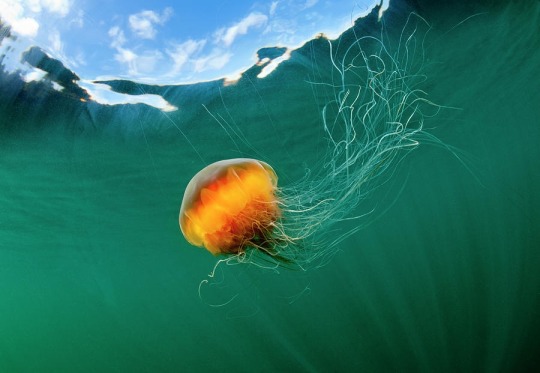

Lion’s Mane Sea Jellies 💜🧡💛
#beauty under the waves#underwater#dive#jellyfish#sea jellies#lions mane jelly#animal#cnidarian#sea animal#sea life#sea creatures#marine#marine animals#marine invertebrates#marine biology#marine life#underwater life#beautiful#pacific#saltwater#ocean#sea
1K notes
·
View notes
Note
hello i dont know if these are edible but i found some jellyfish at the beach for you today 🍽🍽


!!! they're beautiful omg can anyone ID these
23 notes
·
View notes
Text
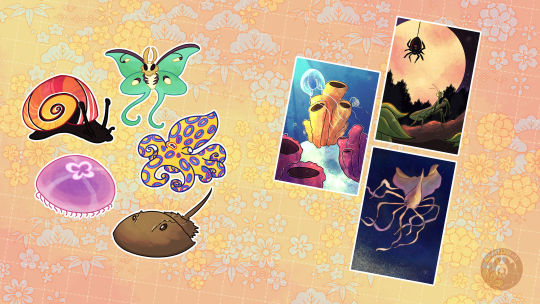
Spineless Wonders, an invertebrate illustration collection, launches on December 1st!
This collection will feature stickers and mini-prints featuring various invertebrate animals! Follow the project to make sure you don't miss our launch date!
#illustration#digital art#artists on tumblr#kickstarter#animals#nature#invertebrate#bugs#arthropod#mollusc#cnidarian#sponge
24 notes
·
View notes
Text

Generic belemnite, surrounded by equally generic Aurelia-type jellyfish.
#mostly modelled from memory so probably not 100% accurate#belemnite#cephalopod#mollusk#aurelia#scyphozoa#cnidarian#jurassic#mesozoic#paleontology#palaeoblr#paleoart#my art
109 notes
·
View notes
Note
*spills bucket of live clams onto your ask box* do you have any horrifying facts about cnidarians please and thank you
oh god oh fuck the clams desrgodthe clam s
but yes!! sorry for such a late answer. cniderians are my favs fr!! most of these facts are jellyfish-related since jellies are very peculiar cnidarians, but I have much love for anemones, polyps and hydroids as well!! I’m not as knowledgeable on cnidarians as like,, many other people lmao but here is some of my fav cnidarian facts (some horrifying and some not) as someone who enjoys marine biology recreationally
- jellyfish have an incomplete digestive system!! they have no intestines or organs that would usually be used for digestion and general body function. because of this, they use the same opening or orifice to both take in food and expel waste!! so food go in and out through the same area.
- (I believe) all cnidarians have light-sensing organs called ocelli, but box jellyfish have more advanced visual systems! they have four eye capsules, with six eyes in each!! there are upper and lower eye lenses! those dudes can See you.
- speaking of box jellies— box jellies have their own class in the Cnidaria phylum! they’re in class Cubazoa. special little guys
- some jellies have teeth!! they’re not the same as our teeth, but some jellies like comb jellies have thin, sharp hairs on their tentacles to help them catch prey. chomp chomp!
- I don’t know much about these guys myself, but there’s a kind of jellyfish that can “reverse age”— the “immortal jellyfish” can transfer its cells back to early stages of development once it reaches adulthood.
- I don’t know much abt these little guys but there’s a kind of parasite called Polypodium hydriforme (which can be classified as a cnidarian in some cases, but also can be qualified in other classes) which parasitizes sturgeon n other similar fish eggs! I would love to learn more abt them myself

^ ( the Polypodium hydriforme in question)
I’m sure there are much more weird bits of information on all kinds of cnidarians out there, but those are the ones I happen to know off the top of my head or find the weirdest. tysm for the ask! hope this satiated the need for horrifying cnidarian facts :}}
#marine bio#marine biology#jellyfish#Cnidaria#cnidarian#science#ask#ask me anything#askjellyfishmakeoutparty#as always if any of my info is wrong or you wanna add onto this.. feel free to!#science question#marine science#biology#ocean#ocean lover#cool stuff#cool facts
134 notes
·
View notes
Text

Invertober Day 19: The whitespotted jelly from Australia. I gravitated toward lists with an actual creature or species than vague prompts more this year because it was easier on my tired brain. A species I'm familiar with since we have them at work. Added a light ink wash to pull out some of the lighter patterning. Pentel brushpen, Prismacolor fine-line marker, and Bombay Black with brush on Canson mixed media.
#Invertober#Invertober 2023#InvertoberDay19#whitespotted jelly#jellyfish#sea jelly#animal#invertebrate#fossilforager#Cnidarian#white-spotted jellyfish#Australian spotted jelly#Phyllorhiza punctata#art#my art#sciart#October drawings#October drawings 2023#black and white#pen and ink
17 notes
·
View notes
Text
[image id: a digital illustration of Scylla, a monster from Greek mythology. Scylla has the upper body of a fish monster, with slightly feminine features and long tentacle hair. She is holding a harpoon with her left hand and petting one of the creatures at her waist with the right. Her waist sprouts the head, front legs, and torsos of five dog-like creatures with fish fins on their legs and necks. Below the dog-like creatures with paws and torsos, more dog-like faces sprout from the scales of her fish like tail. The dog heads get smaller and less detailed towards the tip of the tail, until they become large scales. The tail ends in a fish fin. /end id]

I was thinking about the version of Scylla (there are many as far as I can tell) that has dog heads sprouting from her waist, and then I was thinking about the siphonosirens I've been drawing periodically, and I had this amazing mental image of Scylla that I will probably never draw because her tail was much longer than this with so many more dog parts.
So here's the imperfect version I mashed out into reality anyway! Bam! Pow! Fuck off crippling perfectionism! Wammo! Take that executive dysfunction!
#sometimes you just have to slap your perfectionism and say 'I am drawing this sloppy style and you can't stop me'#my art#scylla#mermaid#siphonosiren#artist described#described#tw: body horror#body horror#siphonophore#cnidarian#fractal biology#monster woman#sea monster#dogs#so many good boys here#what is the point of sprouting dogs if you can't pet them#mermaids
22 notes
·
View notes
Text

uhhh guys i think i might like drawing mascot horror (took like a big part of notepad too)
more of the weirdos under the cut

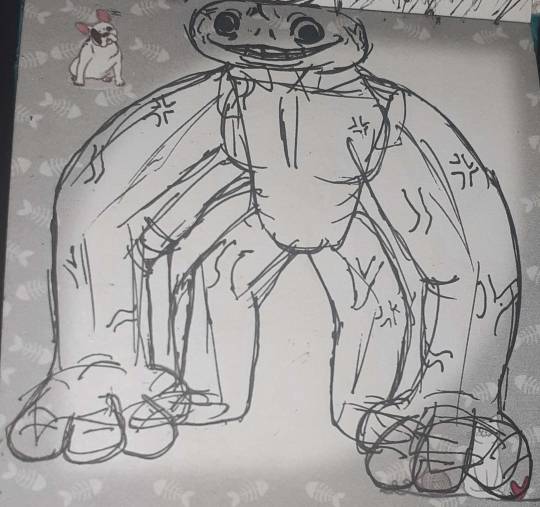



WHY ARE THEY SO FUN TO DRAW??
#fanart#doodle#garten of banban#banban#banbaleena#jumbo josh#captain fiddles#stinger flynn#sheriff toadster#monster#jellyfish#invertebrate#cnidarian#toad#frog#amphibian#scopophobia#cw scopophobia#scopohobia tw#snowy doodles
9 notes
·
View notes
Text

Portuguese man o' war
By: Unknown photographer
From: Wildlife Fact-File
1990s
783 notes
·
View notes
Text

Coral (Montipora grisea), Red Sea, Egypt
45 notes
·
View notes
Text
18 minutes of aptasia feeding condensed into 1 minute
11 notes
·
View notes
Text

Sea walnut | Mnemiopsis leidyi
X
113 notes
·
View notes
Photo

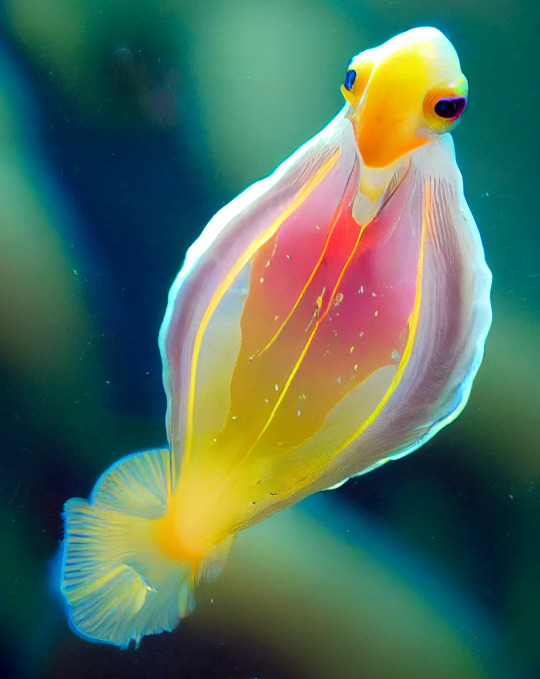
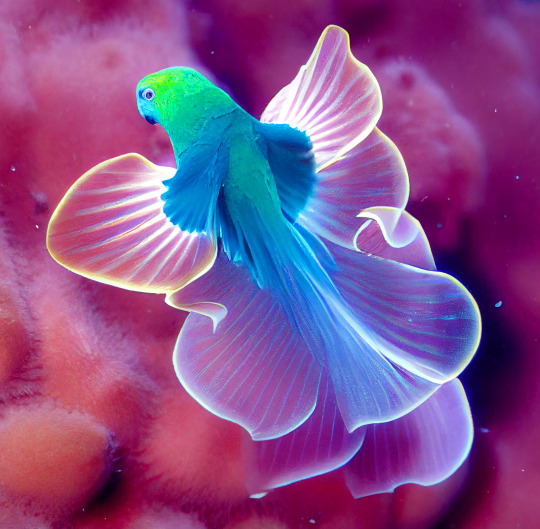
Proto-Atlantean ape warrior clad in stinging anemone-derived bio-armor, plus a couple of parrot cliones (chick and mature adult).
50 notes
·
View notes